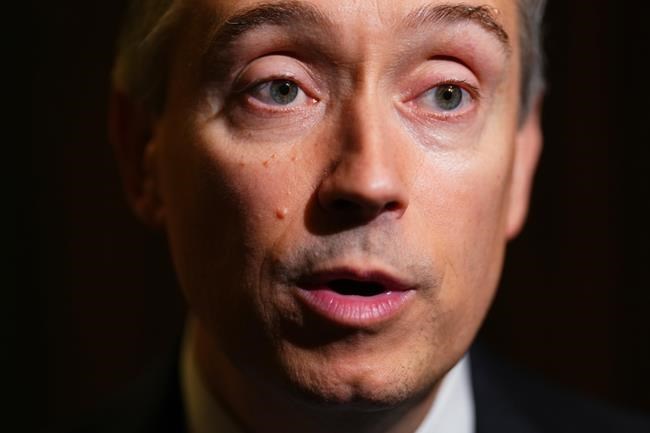OTTAWA — A deal to save a $5-billion electric vehicle battery plant in Windsor is inching closer, Industry Minister François-Philippe Champagne said Wednesday.
"I would say everyone should take a deep breath, things are going well, the negotiations are progressing," Champagne said following a Liberal caucus meeting in Ottawa.
"We're getting closer to the end of the negotiation."
The federal government, Ontario, Stellantis and LG Energy Solution have been in heavy negotiations for a few weeks after the companies paused construction on their planned factory in a dispute over federal subsidies.
The negotiations have been stuck between what Canada thinks is fair and affordable and what the company believes it is due. It has threatened to move the plant out of Windsor if it doesn't get what it says it was promised by the federal government in a "special contribution agreement" in February.
Champagne said the company has to be "reasonable."
The companies announced the plan for the battery facility in March 2022 with a $1-billion capital contribution from the federal and provincial governments.
But the companies went back for more government support after the United States announced new production tax credits for EV battery makers as part of the Inflation Reduction Agreement.
That legislation compelled Canada to sign an agreement with Volkswagen to subsidize batteries made at a planned new plant in St. Thomas, Ont., that could be worth up to $13 billion over a decade.
Champagne said he made a similar offer to Stellantis, but negotiations continue about how the formula would apply to the Stellantis plant, which is half the size of Volkswagen's but will start producing batteries three years earlier.
The subsidies are directly proportionate to the tax credits on offer under the IRA, which start at a tax credit of $35 per kilowatt hour from now until 2030, when they begin to be phased out. By 2033, they will be eliminated.
The Volkswagen deal includes a clause that ensures Canada's subsidies keep pace with the U.S. tax credits, and if the IRA is reduced or eliminated earlier than planned, Canada's subsidies will go down an equal amount.Â
The Stellantis plant is have an annual production capacity of 45 gigawatt hours, which could make enough batteries for more than 400,000 vehicles a year, with the first production happening as early as 2024.
Volkswagen's plant, with twice the production capacity, could produce enough for nearly a million vehicles annually, with initial production starting in 2027.Â
Neither company's plant is likely to make the maximum number of batteries in its first year.
In Canada, the production timelines would make Stellantis eligible for the full equivalent subsidy for nearly seven years, while Volkswagen would be getting it for just three or four.
Both plants are mainly intended to supply batteries to the companies' own EVs. For Volkswagen, those won't be made in Canada, as it has no auto plants in the country and no intention to build any.
Stellantis is retooling its auto manufacturing sites in both Windsor and Brampton, Ont., to be able to make electric vehicles. Champagne said stronger commitments, particularly for the Brampton plant, are part of the ongoing talks with the company right now.
"That's all part of the negotiation," he said.
Canada also insisted that the Ontario government put additional funds on the table, which Premier Doug Ford initially balked at but later committed to doing.
Champagne said he spoke with Ontario Premier Doug Ford both Tuesday and Wednesday.
"For me, this is an ongoing discussion," Champagne said. "We talk every day. And we're going to get to a deal. I'm very confident on that."
This report by The Canadian Press was first published May 31, 2023.
Mia Rabson, The Canadian Press




